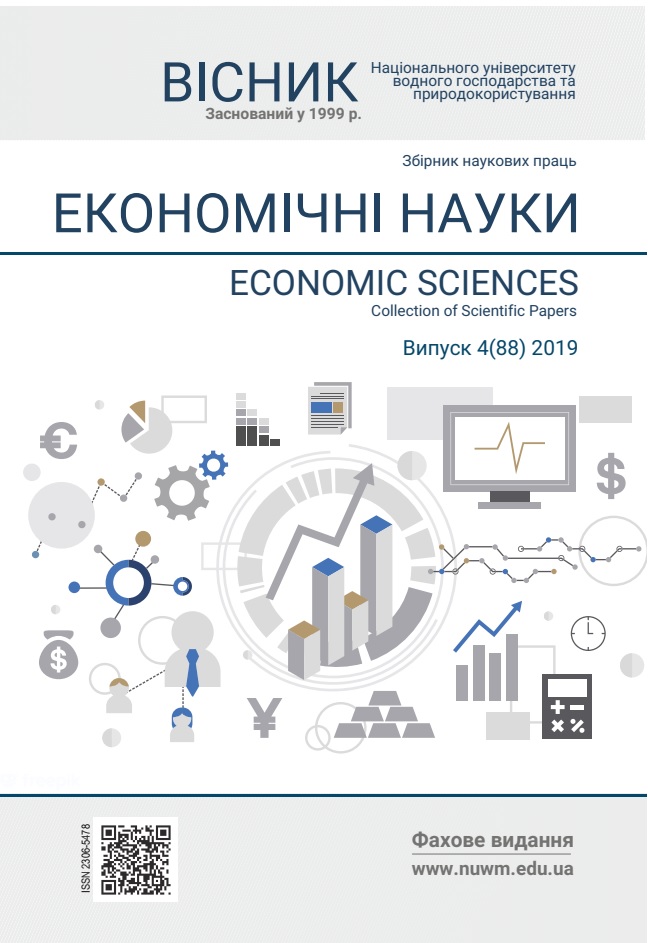FORMATION OF THE MONETARY POLICY OF THE STATE: EXPERIENCE OF CERTAIN FOREIGN COUNTRIES
DOI:
https://doi.org/10.31713/ve4201915Keywords:
monetary policy, monetary policy tools, financial crisis, financial system, inflation targeting.Abstract
The peculiarities of monetary policy formation in particulareconomic conditions, in particular during the financial crisis, in someforeign countries are considered. The main monetary assets that havebeen used by the United States, the United Kingdom, Sweden, NewZealand, Poland and the countries of the former Soviet Union havebeen highlighted. The unconventional monetary means used in othercountries to overcome the negative effects of the financial crisis areanalyzed, due to the need to stabilize the situation in the bankingsector and stimulate the economic development of the countries. Inparticular, quantitative easing, large-scale acquisitions of governmentassets, constant "informing the public" of monetary policy intentionsthat have been put in place to address the negative effects of thefinancial crisis. These approaches have proved positive in terms offorming stable long-term expectations of economic agents for thefuture monetary policy course. The need to consider the introductionof foreign experience into the national economy has been updated,since the absence of structural changes in the institutional environment will lead to the absence of significant results. Positiveexperience of monetary assets of the studied countries has beendetermined and it is expedient to implement it in the formulation ofmonetary policy in Ukraine. The expediency of introducing overnightdeposits in Ukraine and the ability of a banking institution to makesuch deposits into the accounts of the National Bank of Ukraine havebeen proved, which would reduce the possibility of speculation withthe use of excess liquidity of banks. As well as systematicallyinforming the public about measures implemented within monetarypolicy, which will facilitate its transparency and simplify itsgovernment control.References
Дзюблюк О. Монетарна політика як ключовий важіль реалізації антикризових заходів в економіці. Банківська справа. 2017. № 2. С. 3–26.
Federal Reserve System : Purposes and Functions. A publication of the Board of Governors of the Federal Reserve System. 1 Otk ed. October 2016. P. 41, 46. URL : https://wunv.federalreserve.gov/pf/pf.htm. (дата звернення: 01.12.2019).
Сафонов Ю. М. Адаптація міжнародного досвіду при реалізації антикризової монетарної політики України. Інтелект XXI. № 3. 2016. С. 20–26.
Sarah J., Matt R., Olaf Weeken I. The Bank of England’s Special Liquidity Scheme. Bank of England Q uarterly Bulletin. 2012. Q l. Vol. 52, No. 1. P. 57–66.
Горюнов Е., Трунин П. Банк России на перепутье: нужно ли смягчать денежно-кредитную политику? Вопросы экономики. 2013. № 6. С. 1–16.
Щеглюк М. С. Пріоритети розвитку Центрального банку в умовах фінансової інтеграції : дис. … канд. екон. наук : 08.00.08. К., 2016. 274 с.
Юрчишин В. Особливості монетарної політики Швеції. Національна безпека і оборона. 2009. № 1. С. 51–56.
Oberg S. Sweden and the financial crisis. URL : http://www.riksbank.se. (дата звернення: 01.12.2019).
Пасічний М. Методологічні засади формування фінансової політики країни. Зовнішня торгівля: економіка, фінанси, право. 2018. № 3. С. 116–130.
Monetary Policy Instruments. Narodowy Bank Polski. 2015. URL : http://www.nbp.pl/homen.aspx?f=/en/onbp/informacje/polityka_pieniezna.html. (дата звернення: 01.12.2019).
Пасічний М. Монетарна політика в трансформаційній економіці. Зовнішня торгівля: економіка, фінанси, право. 2019. № 2. С. 135–150.
REFERENCES:
Dziubliuk O. Monetarna polityka yak kliuchovyi vazhil realizatsii antykryzovykh zakhodiv v ekonomitsi. Bankivska sprava. 2017. № 2. S. 3–26.
Federal Reserve System : Purposes and Functions. A publication of the Board of Governors of the Federal Reserve System. 1 Otk ed. October 2016. P. 41, 46. URL : https://wunv.federalreserve.gov/pf/pf.htm. (data zvernennia: 01.12.2019).
Safonov Yu. M. Adaptatsiia mizhnarodnoho dosvidu pry realizatsii antykryzovoi monetarnoi polityky Ukrainy. Intelekt XXI. № 3. 2016. S. 20–26.
Sarah J., Matt R., Olaf Weeken I. The Bank of Englands Special Liquidity Scheme. Bank of England Q uarterly Bulletin. 2012. Q l. Vol. 52, No. 1. P. 57–66.
Horiunov E., Trunyn P. Bank Rossіі na perepute: nuzhno lі smiahchat denezhno-kredіtnuiu polіtіku? Voprosу еkonomіkі. 2013. № 6. S. 1–16.
Shchehliuk M. S. Priorytety rozvytku Tsentralnoho banku v umovakh finansovoi intehratsii : dys. … kand. ekon. nauk : 08.00.08. K., 2016. 274 s.
Yurchyshyn V. Osoblyvosti monetarnoi polityky Shvetsii. Natsionalna bezpeka i oborona. 2009. № 1. S. 51–56.
Oberg S. Sweden and the financial crisis. URL : http://www.riksbank.se. (data zvernennia: 01.12.2019).
Pasichnyi M. Metodolohichni zasady formuvannia finansovoi polityky krainy. zovnishnia torhivlia: ekonomika, finansy, pravo. 2018. № 3. S. 116–130.
Monetary Policy Instruments. Narodowy Bank Polski. 2015. URL : http://www.nbp.pl/homen.aspx?f=/en/onbp/informacje/polityka_pieniezna.html. (data zvernennia: 01.12.2019).
Pasichnyi M. Monetarna polityka v transformatsiinii ekonomitsi. Zovnishnia torhivlia: ekonomika, finansy, pravo. 2019. № 2. S. 135–150

